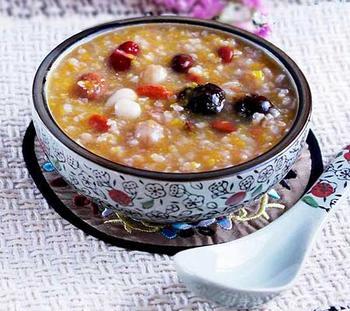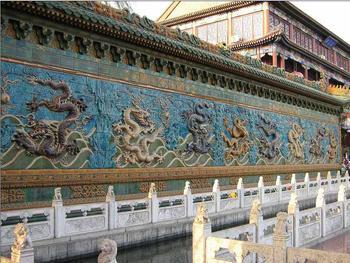八 (bā), eight, is another popular number in Chinese culture. It is a near homophone for 发 (fā) meaning good fortune. Many Chinese people prefer to head down the aisle or start a business on dates that contain an eight. The eighth day of the first lunar month (the month of the Spring Festival) on the Chinese calendar is the day business resumes after the holiday period. It shows people’s hope to 发财 (fā cái) – make money.

In China there are 八大菜系 (bā dà cài xì) – eight grand cuisines, which refer to the Shandong, Sichuan, Cantonoese, Fujian, Jiangsu, Zhejiang, Hunan and Anhui culinary traditions. A nutritious congee, or porridge, with eight ingredients, 腊八粥 (là bā zhōu) is eaten on the eighth day of the 12th lunar month by many Chinese people.
八卦图 (bā guà tú) is a well-known symbol of Taoist cosmology. The world knows it as 阴 (yīn) and 阳 (yáng). It contains the eight Taoist trigrams that represent the fundamental principles of reality according to the philosophy. 八卦 (bā guà) used by itself is derogative, and implies a person is a gossip and impolite.
九 (jiǔ), nine, is the next number in our sequence. A homophone, 久, means a long time, or eternity. Chinese like to use the two homophones to play word games. Ancient China was once divided into nine territories, which together were known as the 九州 (jiǔ zhōu), or nine states. 九鼎 (jiǔ dǐng), or nine cauldrons, were cast to represent the nine lands. The owner of all cauldrons would be emperor of all the states.

一言九鼎 (yì yán jiǔ dǐng) indicates a decision maker with much influence. 九龙壁 (jiǔ lóng bì), or nine-dragon wall, represents a royal reign. The two most famous nine-dragon walls now stand in Beijing’s Beihai Park and in the Imperial Palace at the center of the capital. The Imperial Palace has 9,999 rooms. To the Chinese ear, four nines sounds like a never-ending cycle – eternity, repeating itself four times.
十 (shí) , ten, is a cross, and it is used pictographically in Chinese to represent, for instance, a 十字路口 (shí zì lù kǒu), or fourway intersection. The character 十 (shí) contains the two most basic strokes in Chinese calligraphy. It also represents the end of China’s basic integer set, and thus implies completeness. 十全十美 (shí quán shí měi), containing two 10s, denotes a perfect situation or state. 十拿九稳 (shí ná jiǔ wěn), containing one ten and one nine, means assured and confident. 十分 (shí fēn), ten parts, can be used as an adverb to indicate a very high level of achievement.
By SEBASTIEN ROUSSILLAT ,who is a postgraduate at Shandong Normal University.
Source:China Today
Editor:Jinxin
